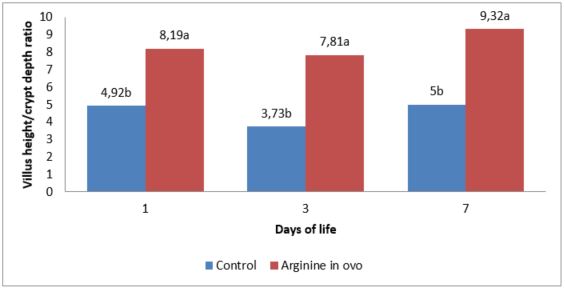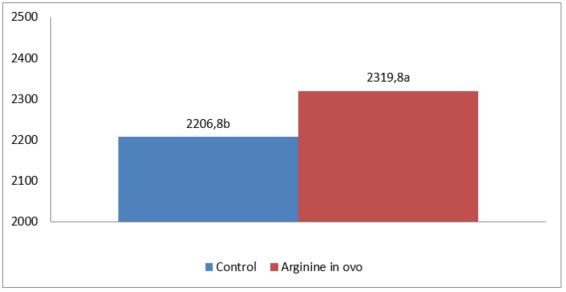



In ovo feeding: ingesting the facts
The quality of a newly hatched chick is a major factor in determining its health, liveability and growth. However, many poultry farmers will tell you that they have seen the proportion of weak or low-quality chicks arriving from the hatchery increase in recent yearsWords Alfred Blanch
The good news is that this general trend in the industry could be reversed, using systems for feeding chick embryos by inoculating nutrients into the egg amniotic fluid - so-called in ovo feeding.
This process, administered in the last stage of embryonic development, has been shown to improve the vitality and liveability of chicks at birth. When the egg is inoculated with nutrients (around three days before hatching), the future chick is ingesting amniotic fluid. Therefore, the nutrients inoculated in that fluid will reach the embryonic intestine without any problem. In Figure 1 below, the in ovo feeding method is shown graphically.

Figure 1. In ovo feeding
Several nutritional supplements can be included through this practice. With respect to amino acids, Shafey et al (2014) inoculated a mixture of lysine, arginine, glutamine, glycine and proline in eggs and observed significant improvements in the productive performance of chickens during the first three weeks of life. Similarly, Co?kun et al (2014) and Kadam et al (2009) demonstrated the positive effect of the inoculation of DL-methionine and threonine, respectively, on the weight of the chicks. More recently, Kermanshahi et al (2017) indicated that the inoculation of threonine in quail eggs results in an increase in the length and surface area of the intestinal villi in new-born chicks.
The in ovo feeding of arginine is of special interest. This amino acid participates in several metabolic pathways that produce a number of biologically active compounds, which contribute to maximising the development potential of the embryo. The positive effect of the arginine feeding in eggs - at 17.5 days of incubation - on the development of the gastrointestinal tract of the chicks during the first week of life and on the morphology of the intestinal villi has recently been demonstrated by Gao et al (2018a), as shown in Figure 2. In addition, the same authors (Gao et al, 2018b) have shown that the positive effect of the in ovo inoculation of arginine is sustained until the end of the fattening of the chickens (Figure 3).
Figure 2. Effect of in ovo feeding of arginine on the gut morphology in chicks (adapted from Gao et al, 2018a; different letters next to values on the same day of life indicate significant differences
Figure 3. Effect of in ovo feeding of arginine on bodyweight at 42 days (adapted from Gao et al, 2018b)
The rapid growth of the embryo is associated with a high demand for energy. Kucharska-Gaca et al (2017) have recently indicated that the in ovo administration of different types of carbohydrates (glucose, sucrose, maltose, dextrin) indeed increases the energy availability for the embryo. Smirnov et al (2006) observed how the in ovo inoculation of different carbohydrates (sucrose, maltose and dextrin) at 17.5 days of incubation increases the morphological development of the intestinal epithelium and the number of goblet cells, as well as the gene expression of mucins, the first protective barrier against pathogens in the intestine of hatched chicks, contributing to good-health during the first hours of life.
In ovo feeding of vitamins contributes to the growth of broiler chickens and can modulate their resistance to diseases (Kucharska et al, 2017). The effect of vitamin inoculation in fertile eggs has been demonstrated by several scientists (Bhanja et al, 2007; Nowaczewski et al, 2012; Selim et al, 2012; Goel et al, 2013; Salary et al, 2014; Yair et al 2015; Sgavioli et al, 2016). The most commonly used vitamins in these studies were A, B1, B2, B6, C, E and D3. The main findings were, depending on the study: higher live weight at birth and throughout the life of the chickens; improved skeleton development; larger lymphoid organs; and, in general, a superior immune response.
In addition to amino acids, sugars or vitamins, the inoculation of probiotics in fertile eggs is a growing practice. At the poultry science department of Mississippi State University, it was demonstrated that the inoculation of 1.4 x 107 colony-forming units of a strain of Enterococcus faecium in fertile eggs of 18 days of incubation reduced the mortality of the chicks during the first week of life by 50 percent (Beck et al, 2016). Recently, the same team from Mississippi (Dittoe et al, 2018) observed that the in ovo feeding of Enterococcus faecium resulted in a significant increase in the relative weight of each gastrointestinal segment in 12-hour-old chicks (Table 1) and improved their live performance, at least through the first 21 days of a grow-out (Castañeda et al, 2018).
Table 1. Gastrointestinal segment weight relative to bodyweight (%) at 12 hours of life (adapted from Dittoe et al, 2018)
In summary, in view of the above research findings, the in ovo feeding of several types of nutrients seems to be a promising strategy to promote not only the weight, health and liveability of the newly hatched chicks, but also growth throughout their lives. It will be in the hands of the chicken breeders to define which is the best compound combination that, when fed in ovo in practice, results in the highest economic return.












